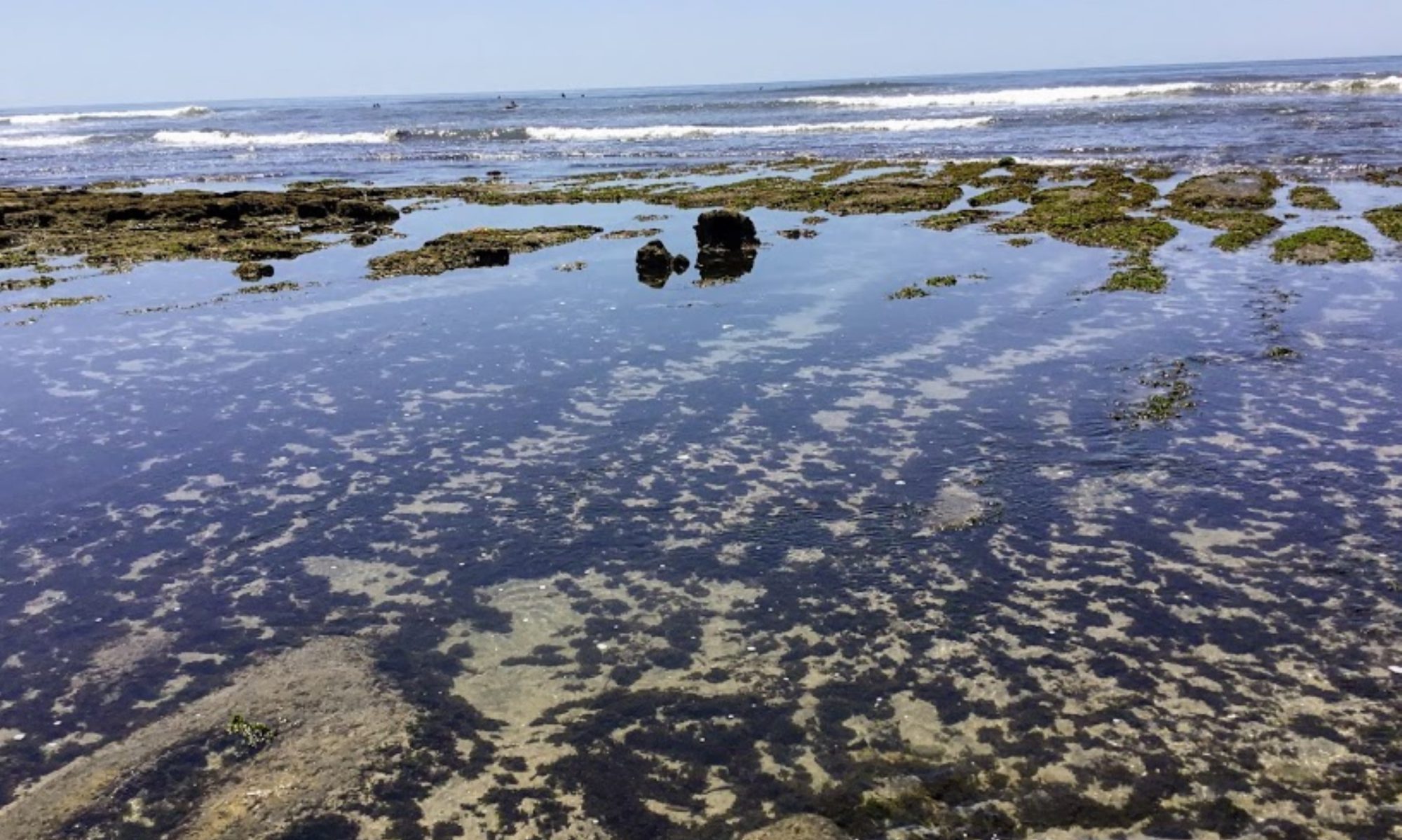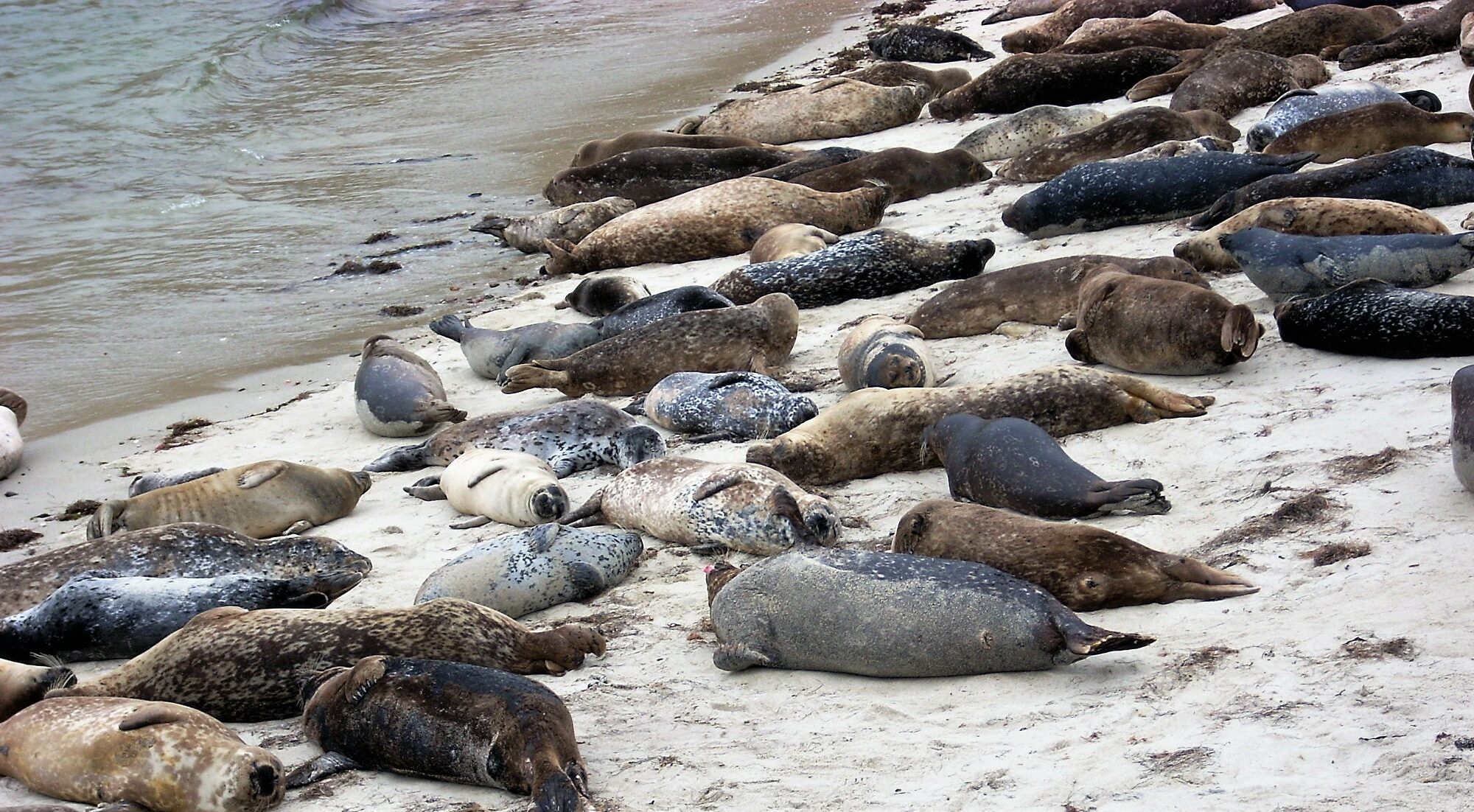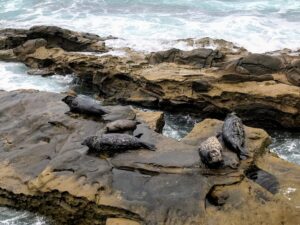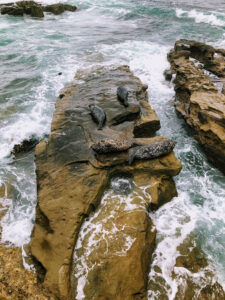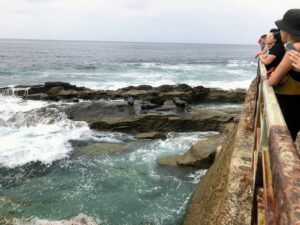One of my favorite places to bring family and friends from out of town is La Jolla! Our absolute favorite place to visit in La Jolla is at the Children’s Pool, Point Mencinger, and Casa Beach. We love to see if the La Jolla harbor seals are hauled out on the rocks or the beach.
Did you know that Point Mencinger and the Children’s Pool is a Pacific harbor seal rookery? (A rookery is where the seals mate and raise young.)
Yes, it is!
And just north at Point La Jolla, there is a California sea lion rookery! The coastline of La Jolla is magical.
On August 17, my girls and I went on a little pinniped adventure.
Let’s now take a look at what we saw, and as a bonus for you and as well as for me, I have listed several La Jolla harbor seal facts.
Table of Contents
The Pacific Harbor Seals of La Jolla
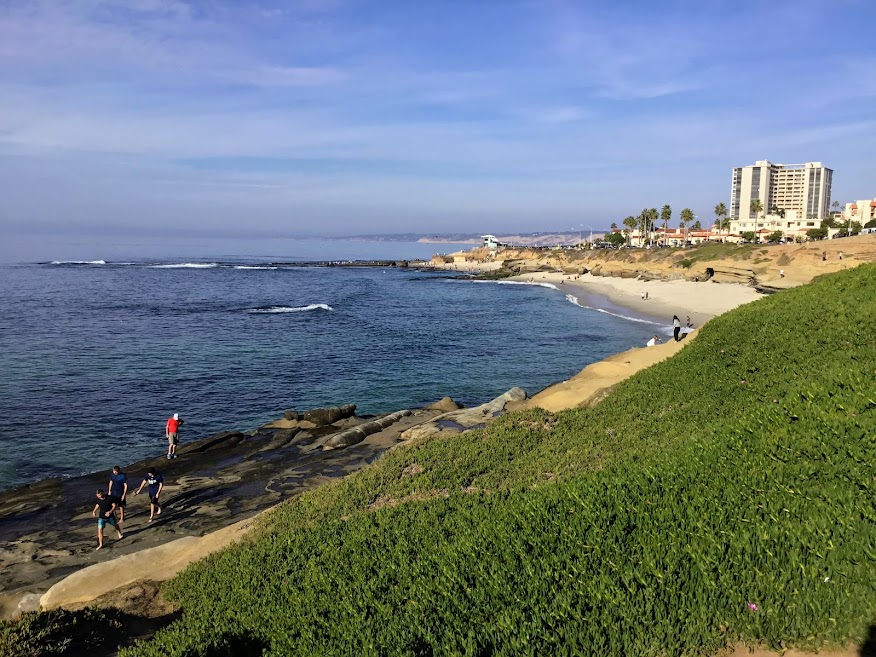
First, it blows me away that I never knew that the formal name of this area in La Jolla is Point Mencinger.
Below is a photo during a King Tide, so the tide was super low.
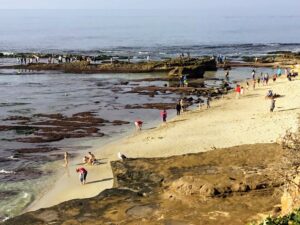

The Pacific harbor seals (Phoca vitulina), considered true seals, have made the Children’s Pool their sanctuary for many years.
True Seals have short front flippers (forelimbs) and lack external ear flaps.
They also have weak pelvic muscles, so they slowly inch their way onto land in an undulating motion.
—>Checking Out the California Sea Lions in La Jolla<—
By contrast, a California sea lion has external ear flaps and huge and robust front flippers, which allow them to walk on land.
La Jolla Children’s Pool History
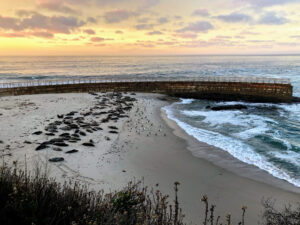
So how exactly did the Children’s Pool in La Jolla come about?
The coastal waters offshore of La Jolla are very rough. Furthermore, many who attempted to swim would drown in the early days.
Because of this, in 1930, local philanthropist Ellen Browning Scripps donated the monies to build the Children’s Pool wall and the observation deck as a safe place for children to swim in mind.
At the time, no one had any idea that this spot was a seal rookery until long afterward.
La Jolla Children’s Pool Harbor Seal Controversy
According to the Seal Conservancy, the La Jolla colony consists of 200 harbor seals that utilize this area.
It is rare for harbor seals to haul out near humans, making this location special and unique.
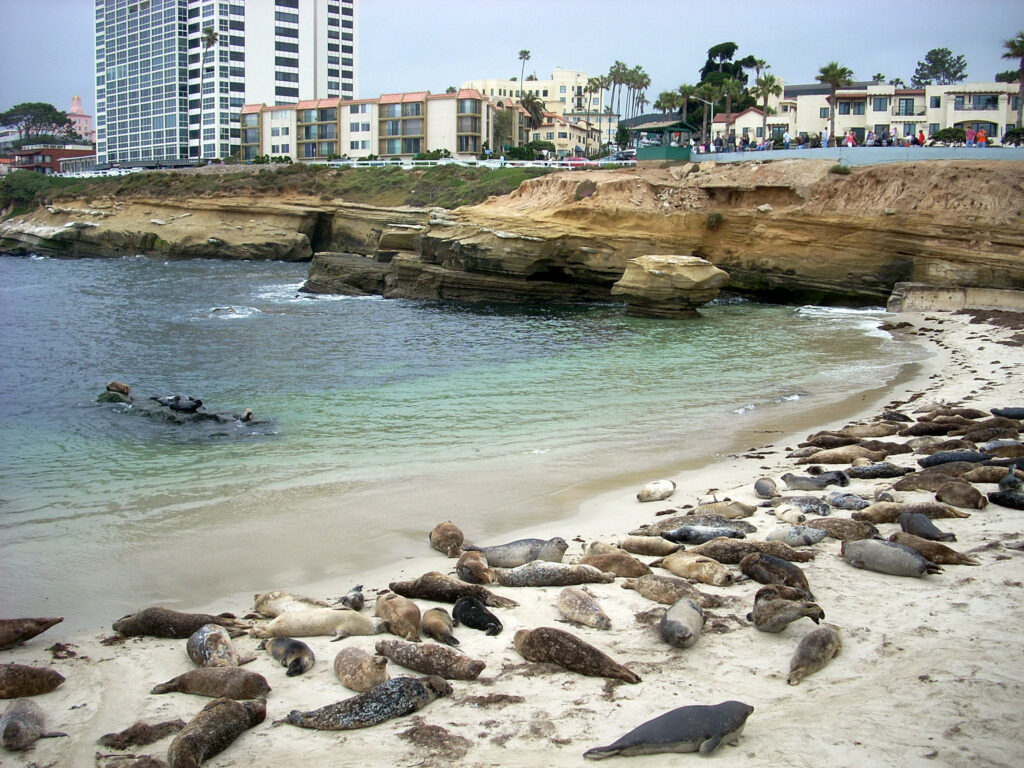
Over the years, there has been a long contention concerning Children’s Pool Beach.
Sometime in the mid-1990s, the seals started returning to the beach. The lifeguards were not sure what to do.
Back then, a rope divided the beach, and the seals had the left side while the humans took over the right.
I remember that the Children’s Pool was constantly closed because the bacterial levels were off the charts due to the excrement of the seals.
Because of this, an active public fight for the removal of the seals began. Several proponents of the seals’ removal cited that the idea of building the Children’s Pool was for children to swim in La Jolla.
And let me tell you that it has been a long and drawn-out fight between the city, state, and federal agencies.
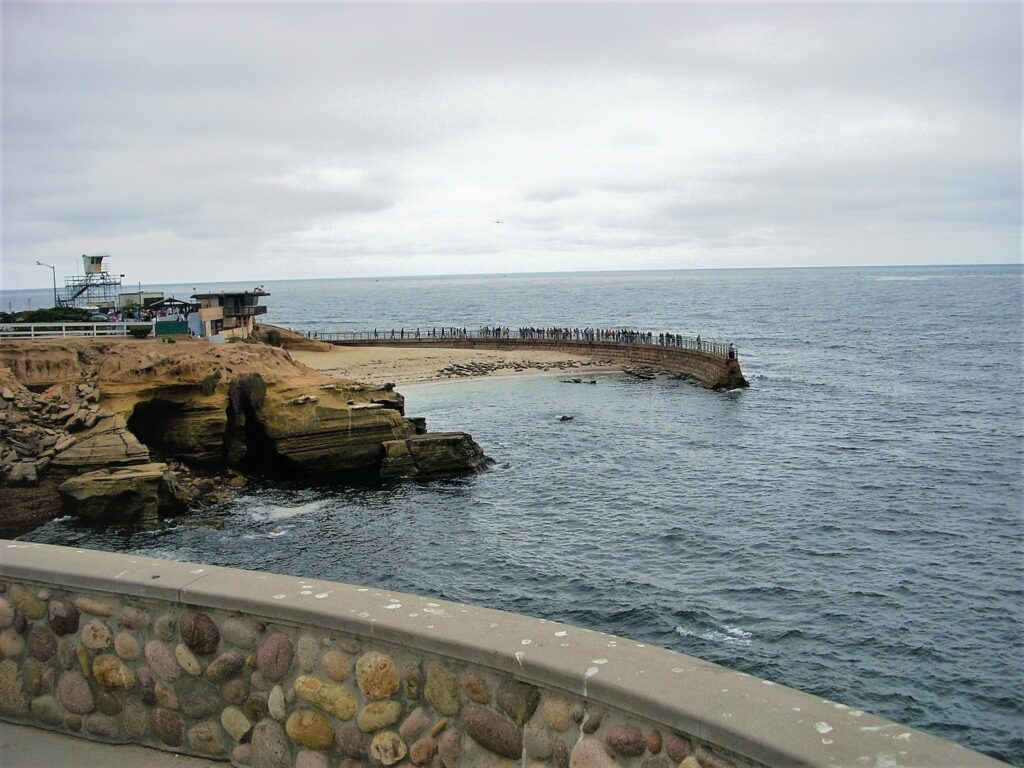
Finally, the La Jolla Friends of the Seals (LJFS), founded in 1999, were able to get the city to close the South Casa Beach/ Children’s Pool to the public during the pupping season in 2014.
Additionally, in 2015, volunteer docents from the LJFS were set up nearby to monitor, mediate and educate the public on the importance of the closure and be present for any questions.
Every December 15 to May 15, Children’s Pool and South Casa Beach are closed to humans, and only seals are permitted on the beach.
Here is some terrific information. If you would like more details-Time the Line of Events Affecting the La Jolla Seals
When is the Best Time to See Pacific Harbor Seal?

You will likely see the most Pacific harbor seals at the Children’s Pool in La Jolla from April 24 to June 6. Why?
For a further explanation, why see below.
You are least likely to see any seals on the beach between 8 am to 6 pm during July, August, and September.
A Few Pacific Harbor Seal Facts

Scientific Name– Phoca vitulin
Weight- 280 to 300 pounds
Length- up to six feet with males slightly larger
Life Span- 25 to 30 years
Pupping Season- December 15- May 15, with the majority of newborn pups arriving between February 8 and March 8
Appearance
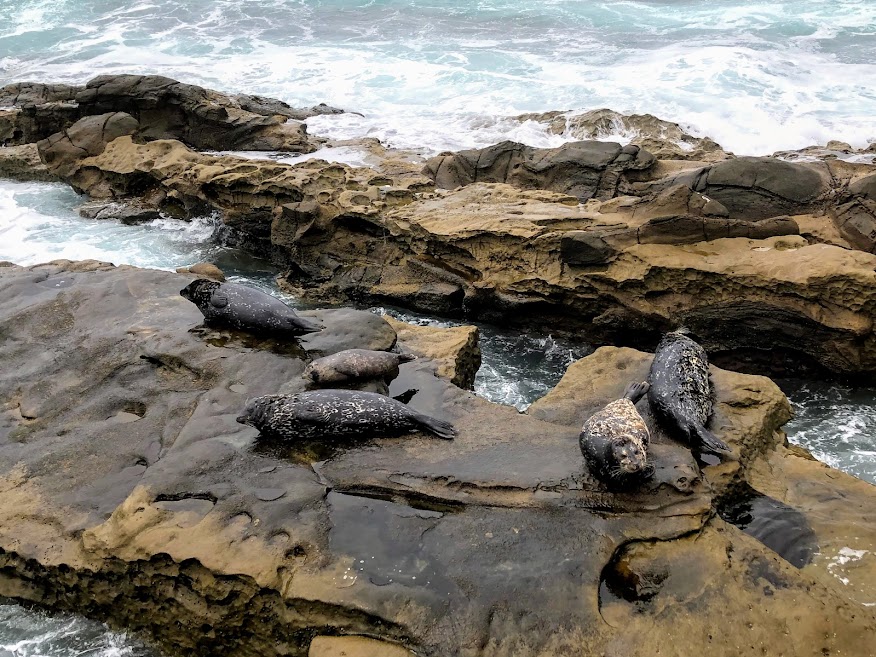
- doglike snout
- fur color two varieties:
- white, light tan to silver
- blue grey with dark speckling or spots
- spots and coloring are unique and are a way of identifying individuals
- molt- shed hair in the mid to late summer- stay onshore more (haul out)
- From late April to the first week of June, they have a ‘catastrophic molt’ where vast hair sheets come off. Because of this, they have a tough time regulating their body temperature. So this is the time when you will see the most harbor seals hauled out on the rocks and Beach.
Diet and Behavior
- the diet consists of fish, crustaceans, and shellfish
- haul out on rocks and beaches to regulate their body temperature, molt, interact with other seals, give birth, and nurse pups
- haul out for 7 to 10 hours per day
- can dive down to 1,500 feet and stay underwater for up to 40 minutes
- sleep underwater by coming up for air every 30 minutes
- mating occurs underwater
La Jolla Pacific Harbor Seal Pup Information

- breed underwater
- pups are born from February to early March
- average weight at birth is 20 to 25 pounds
- newborn pups can swim at birth and can dive up to two minutes at 2 to 3 days old, and by the first month, they can swim over 100 miles from their rookery
- pups nurse for 4 to 6 weeks
- groups of mothers stay together as a way to avoid predators
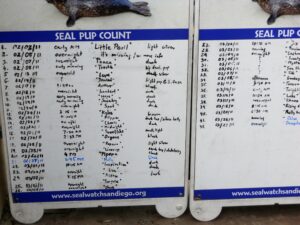
Breeding Range
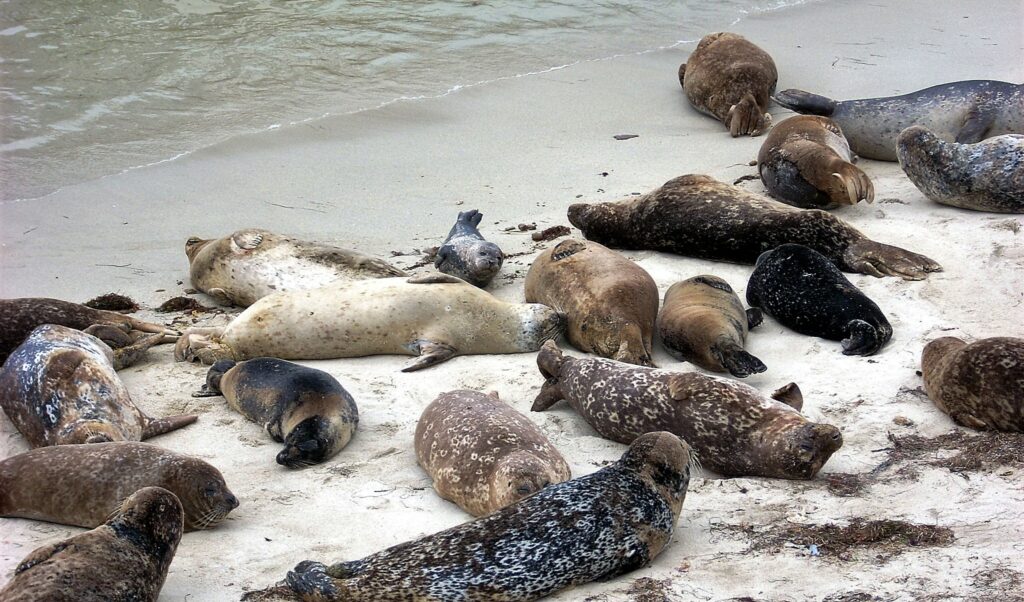
- inhabit the North Atlantic and Pacific Oceans and the Baltic and North Seas but tend to stay close to shore, hence the name Harbor
- considered non-migratory as they remain within 15 to 31 miles of their natal area (rookery)
Stocks

- There are approximately 20,000 Pacific harbor seals off the coast of California, with about 5000 of those found in Southern Califonia
- The La Jolla Pacific harbor seal colony, which hauls out on Casa Beach year-round, is about 200
- Children’s Beach is used as a rookery in the winter and spring.
- Each year about 40 to 50 pups are born
- The La Jolla Pacific harbor seal colony, which hauls out on Casa Beach year-round, is about 200
Lifespan

- the average lifespan is 20 to 25 years
- reach sexual maturity between the ages of 3 to 7 years old
- along the West Coast, pups are birthed earlier in the south compared to up in the north
- mate in the water
- females are pregnant for about ten months
- pups nurse
Threats
- entanglement with fishing equipment
- habitat degradation
- vessel collision
La Jolla Harbor Seals- August 17, 2021
So here are a few photos of what my girls and I were able to witness. As you can see, there were no harbor seals on the beach; they were only on the rocks behind the observation deck.
What do you think? If there is one thing I hope you take away after reading about the La Jolla harbor seals, distance is your friend. Do not approach a seal on the Beach. Never, ever touch a seal, especially a pup, because there is always the chance that the mother seal will abandon it if it recognizes an unfamiliar scent.
Stay far, far away!
Everyone will be happier in the end.
Until next time!
Resources-
- Seal Society of San Diego | Sierra Club San Diego (sandiegosierraclub.org)
- Casa Beach Closed to Humans for the 2021 Pupping Season
- National Oceanic and Atmospheric Administration US Department of Commerce
- NOAA-Laws and Policies: Marine Mammal Protection Act
- La Jolla’s Harbor Seals
- Seal Conservancy

I have always had a deep-seated passion for the Ocean Environment which ultimately led me to receive a degree in Marine Biology. Living in the San Diego area for over 30 years, I have extensively explored the 70 miles of San Diego’s coastline, and I am here to share! Please use my website to your advantage and have a look around at all the wonders that the beaches of San Diego can offer you!
